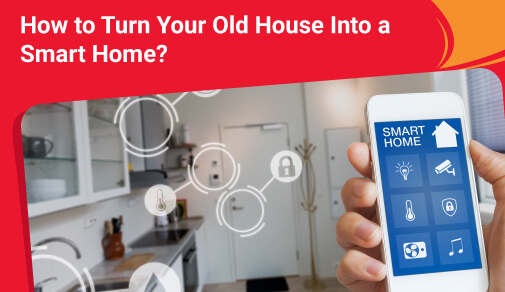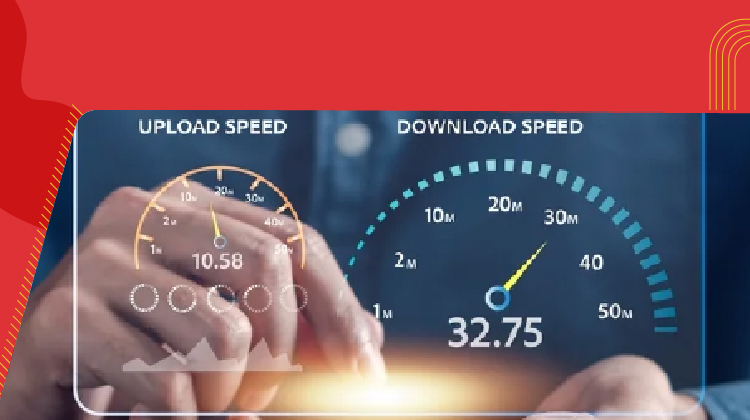How to make an old home a smart home
Monday, Sep 26, 2022 · 7 minutes


SMART HOME
Monday, Sep 26, 2022 · 7 minutes
Smart homes are the newest trend among today's home buyers. These homes are powered by the internet of things (IoT) and are designed to give the homeowner more control over their home and ease of living.
Smart lighting systems, smart TVs, smart door locks, security cameras, and smart speakers such as Amazon Echo/Alexa are among the most popular smart home devices in India. The automation of these electrical and electronic appliances enables the homeowner to control them with their voice or a smartphone. Not only do such smart homes make life easier by automating tasks, but they also help with energy conservation and cost savings.
For the devices to communicate, a dependable broadband network is required. As a result, SMART HOME necessitates a SMART network that provides bandwidth and allows for device mobility. SMART networking is possible in SMART HOME via an optical fibre network connected to FTTH enabled devices.
The devices interact with other SMART devices/systems such as smartphones, tablets, mobile computers, environmental sensors, home monitoring systems, and entertainment equipment. A reliable high-speed internet connection is required for a smart home to function properly. An unlimited plan is ideal for powering smart devices in a technologically enhanced home. When selecting an internet plan, keep in mind that, in addition to smart devices in your home, you will require the internet for daily use purposes such as streaming, gaming, and office work.
Simply put, a Smart Home uses technology and connectivity to monitor itself and provide continuous information on what is going on within it. This includes the following:
Fiber to the home (FTTH), also known as fibre to the premises (FTTP), is the installation and use of optical fibre from a central location directly to individual buildings such as residences, apartment buildings, and businesses in order to provide high-speed internet access.
FTTH broadband uses optical fibre to connect directly to the user's home. Optical fibre transmits data from various servers to improve connectivity and user experience. FTTH is a broadband technology that is uniquely designed to achieve higher performance. Fiber optic cables run from a central office through an FDH or fibre disruption hub, then through a NAP or network access point, and finally into the user's residence via a terminal that serves as a junction box.
The following are the benefits of using FTTH services:
Have we ever considered WHAT enables all of these machines to act SMART? Yes, we are talking about Wi-Fi connectivity, which was previously provided via copper cables but is now being replaced by a new technology known as fibre optic cable... It is more commonly referred to as FTTH.
With the increasing popularity of smart homes, the use of Wi-Fi technology to control home-based systems via smartphones will become an increasingly important part of our lives in the future. We, as end users, have daily access to Wi-Fi, but the technology that powers smart Wi-Fi must be in place.
Several smart home devices do not require a super-fast internet connection. Thermostats and lightbulbs only need to connect to the network in order to accept orders from your smartphone or control panel, so there isn't a lot of ongoing data flow.
However, there is one notable exception: cameras. Doorbell cameras and other smart cameras that transmit images or videos will use a significant amount of bandwidth. The well-known cam can transmit 1080p HD video at up to 4 Mbps. If you have several of them uploading at the same time, you may quickly exhaust a slow connection, leaving no bandwidth for other activities.
To determine the internet speed you will require, consider two factors: your overall internet speed requirements and the requirements of each smart device. Some common smart devices and their speed recommendations are as follows:
There is no formula for calculating the amount of internet speed required by all smart homes. However, understanding the impact that your devices will have on your Internet speed can be beneficial. Most devices, including common smart thermostats and digital assistants, will have little impact on your bandwidth. However, if you require continuous data transfer – as in the case of cameras, which can use up to 4Mbps to upload standard 1080p HD video – you may require a higher bandwidth that can withstand continuous data use without interfering with other devices. Whether you intend to install cameras in your smart home or not, you should always keep in mind that you may be running more than one device at the same time.
As a thumb rule, to have a smart home, you can:
The first thing you should check is that you are not engaged in an active download or a video chat, as these may be using an internet plan. If you aren't using any bandwidth-intensive apps, try restarting your devices, modems, and router. Repeat the test to see if your speed has improved.
If you lower the resolution of your cameras, you won't need to add as much extra speed. Higher resolution images necessitate more bandwidth when uploading or downloading. Reducing your camera's resolution will reduce image quality, but downgrading from 1080p to 720p, for example, may be worthwhile, especially if your internet plan has data limits.
Some smart home tasks are local, which means they only use your home network and not the internet. All of these tasks, however, are still routed through your router, so in a smart home, your router must be capable of handling your internet connection and then some. Fortunately, most modern routers should be able to handle a smart home with ease. However, if your smart home is slow or glitchy and you're using a router from 2002, that router is most likely the source of the problem.
If your Internet connection continues to be poor, you should notify your Internet Service Provider (ISP). Your internet provider may need to change some settings on their end to ensure that your home receives the proper internet plan speed. Even after this, if the problem persists, you should consider switching your internet provider.
102

The New Social: How High-Speed Internet is Redefining 'Quality Time' with Friends and Family
Read more400

How ACT SmartWi-Fi is Redefining Home Internet in 2025: The Age of AI-Powered Seamless Connectivity
Read more154

From Bandwidth to Intelligence: How AI Is Redefining Business Demands from ISPs
Read more
A referral link has been sent to your friend.
Once your friend completes their installation, you'll receive a notification about a 25% discount on your next bill
![]() Please wait while we redirect you
Please wait while we redirect you

![]() One of our representatives will reach out to you shortly
One of our representatives will reach out to you shortly

One of our representatives will reach out to your shortly
![]() Please wait while we redirect you
Please wait while we redirect you

Please enter your registered phone number to proceed

Please enter correct OTP to proceed


Dear customer you are successfully subscribed
Please wait while we redirect you

Your ACT Shield subscription has been successfully deactivated

Dear user, Your account doesn't have an active subscription

Dear customer Entertainment pack is already activated.
Please wait while we redirect you